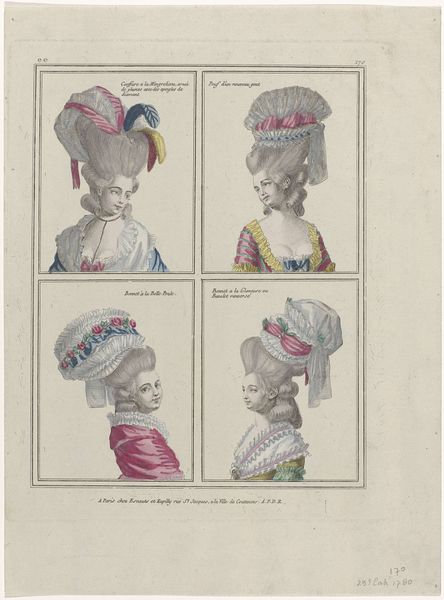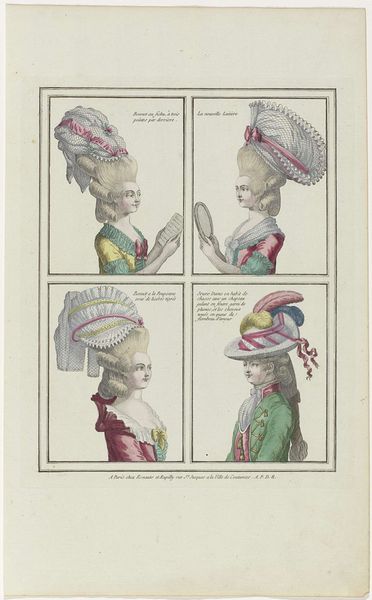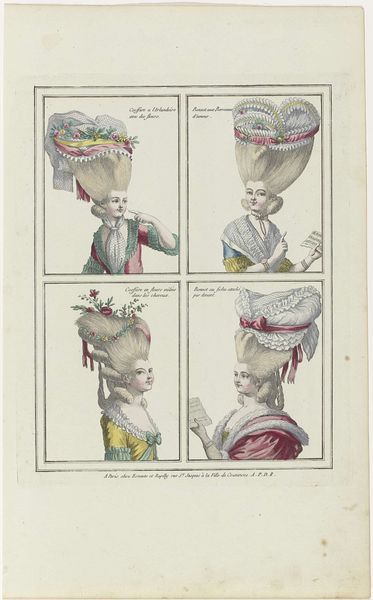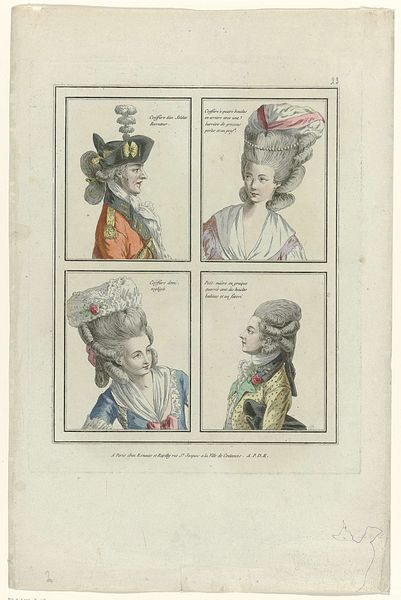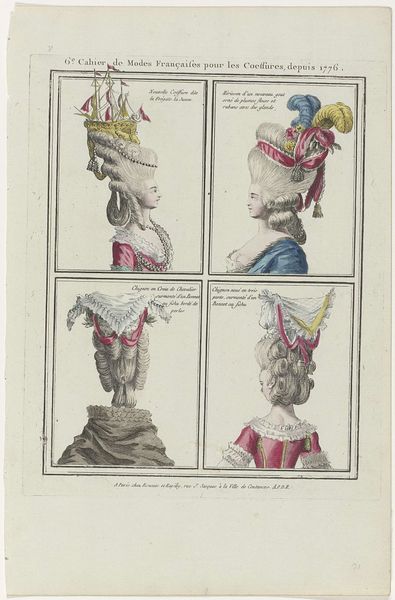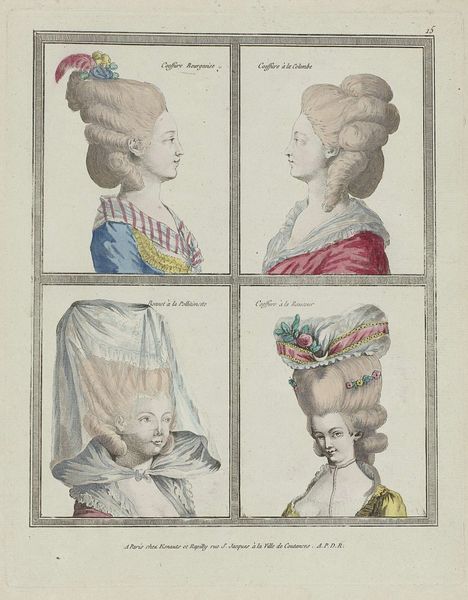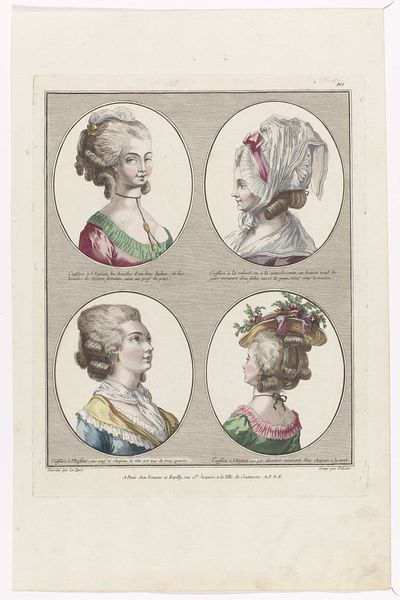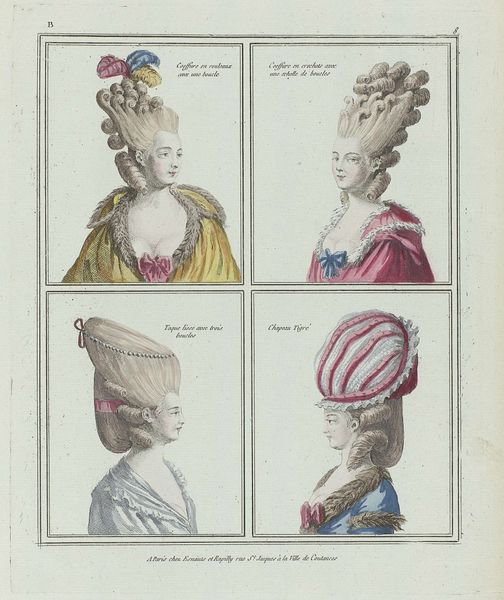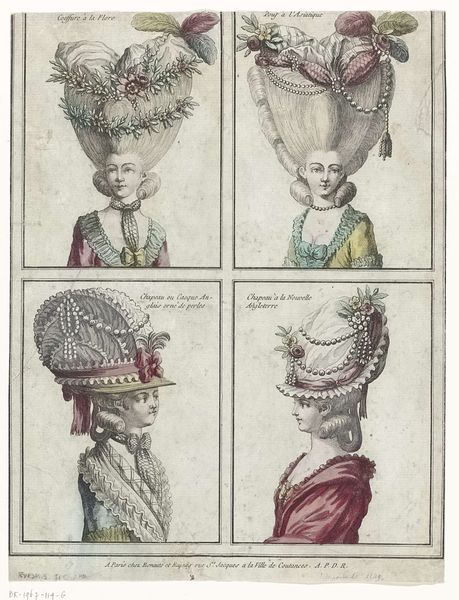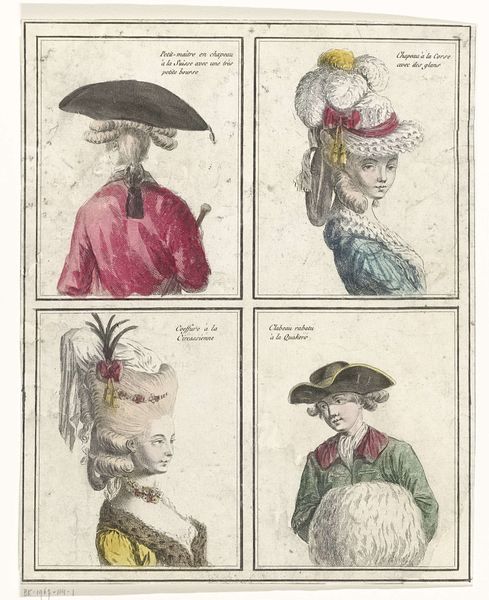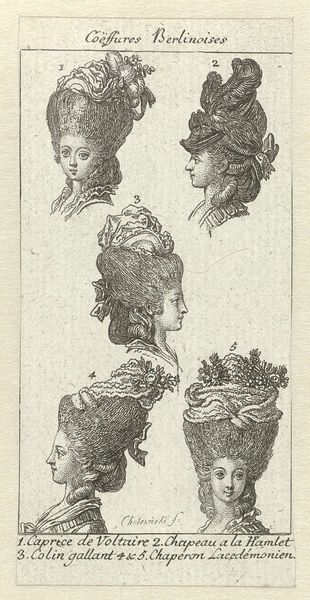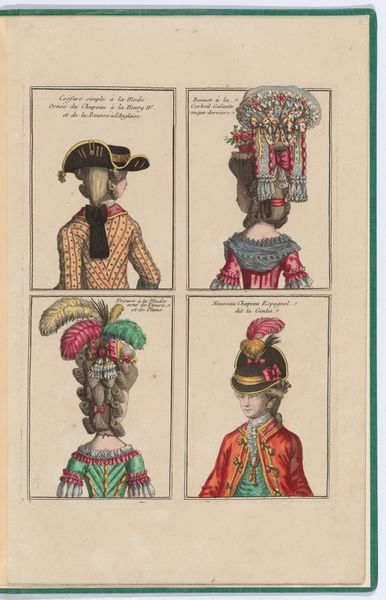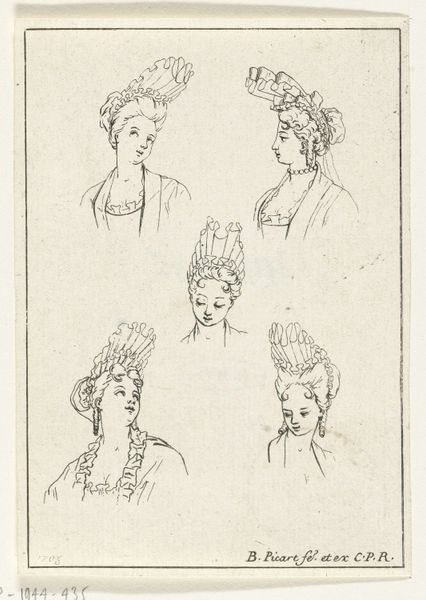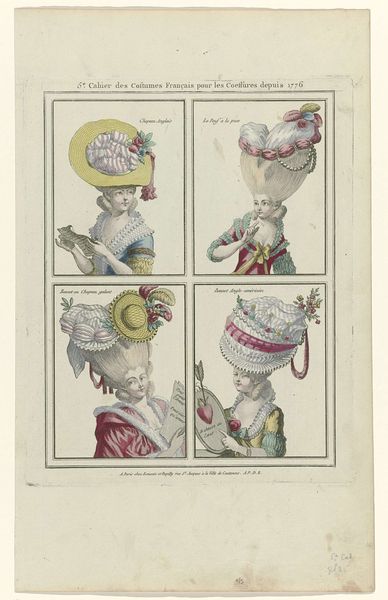
Dimensions: height 276 mm, width 220 mm
Copyright: Rijks Museum: Open Domain
Curator: Before us is "Coiffures, Poufs, Hats and Bonnets: Eleven Coiffures and Headdresses," an ink and watercolor print from 1780, likely created as a commercial fashion plate. Editor: My immediate impression is one of almost cartoonish opulence. The sheer height of those hairstyles seems precariously balanced, as though one wrong move could send them tumbling. Curator: The linear quality of the engraving, enhanced by the delicate watercolour washes, really emphasizes the constructed nature of beauty during this period. We see meticulous detail in the rendering of fabrics, ribbons and floral embellishments. It's all about the surface. Editor: Yes, the surface, but it speaks volumes about the socio-political climate of the time. These elaborate hairstyles were incredibly expensive and impractical. They were statements of wealth and status, quite literally towering over the lower classes. Think of them as architectural embodiments of privilege and access. Curator: Perhaps, but look at the way the artist utilizes line and form to create dynamism. Each coiffure possesses a unique silhouette; note the variations in curvature, the textures achieved through cross-hatching and stippling. We must not disregard formal concerns in favor of social analysis. Editor: But formalism in isolation feels so anemic! To ignore that this image documents the era just before the French Revolution is to miss the potent tension brewing beneath the surface of these frivolous fashions. How complicit was art in furthering such societal disparities? Curator: But does attributing intent take into account the art historical context? Was the work of fashion illustrators really designed as a deliberate vehicle for the entrenchment of societal hierarchies? Maybe it was simply documentation of existing tastes... Editor: Perhaps; however, even "simple documentation" can reveal underlying power structures, particularly if these illustrations perpetuated—and therefore validated—such excesses. The artist's role in either critiquing or normalizing these sartorial extravagances cannot be ignored, surely. Curator: I still contend that the pure formal composition presents many rewards independent of a sociopolitical reading. Look at how they’re grouped in neat quadrants, offering structure. Editor: Perhaps. But as we study art, it becomes clear that these images are more than meets the eye; this piece prompts us to engage critically with its historical underpinnings. Curator: Indeed. Perhaps form and context are but two sides of the same coin.
Comments
rijksmuseum about 2 years ago
⋮
Ladies’ hairstyles were ingenious works of art, built around a core of cushions and horsehair. Hair was piled high in curls and twists (chignons) and adorned with feathers, ribbons, artificial flowers, tulle and jewels to create various fancifully named poufs. Because the hair was dressed using animal fat and powdered with wheat flour, these poufs attracted all manner of insects. Far from hygienic, they moreover did not last long. When they went out, ladies protected their hairdos with a voluminous ribbed hood called a calèche 1. Hairdressers of the time, who styled themselves as artists, used prints to advertise their latest creations and craftsmanship 2 3.
Join the conversation
Join millions of artists and users on Artera today and experience the ultimate creative platform.
